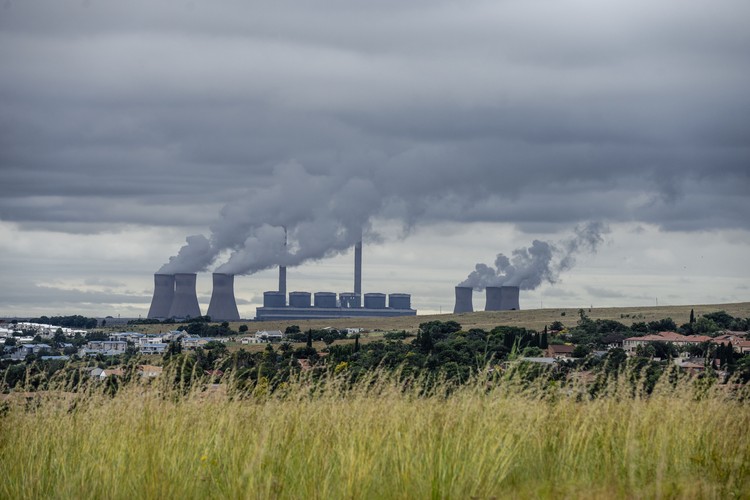
25 April 2025
Coal driven power station in Mpumalanga. Photo: Ihsaan Haffejee
People living in Phola and Carolina in Mpumalanga are bearing the brunt of coal mining pollution in the Highveld.
Ronesa Mtshweni from Amandla Community Development in Carolina said the community is struggling with contaminated water, and this is hurting the health of residents.
She was at the launch, on 15 April, of a report titled, Systems Change for a Just Transition. It was published by environmental justice organisation groundWork.
People at the launch who live in homes near mines described their concerns about acid water contamination and chronic health problems from air pollution.
The report states that “coal mining … is extremely destructive of the environment” and has “seriously impacted on the health of residents of the Highveld”.
The report shows the “immense scale” of the acid mine drainage caused by coal mines. The Upper Olifants River catchment, its epicentre eMalahleni (Witbank), has been heavily polluted by the surrounding mines decanting acidic water from active, abandoned mines, and seepage from dumps, affecting the groundwater and soil.
In 2012, thousands of Carolina residents were warned not to drink their tap water due to high acidity. After legal proceedings by Lawyers for Human Rights and the Legal Resources Centre on behalf of Carolina residents, the North Gauteng High Court ruled that the municipality had a duty to provide the residents with safe drinking water.
Mtshweni said that over a decade later the community’s water is still contaminated. She said that many mines had not been rehabilitated, causing land degradation. “The issue around that is we have livestock. Even cars fall into those pits, and the government is doing nothing about it,” she added.
Twelve of Eskom’s 15 coal-fired power plants are in Mpumalanga, along with over 200 active coal mines and hundreds of abandoned ones. Sasol’s Secunda plant is described as the biggest, single point carbon dioxide emitter in the world.
The report states that an “ecological debt” is owed to people in Highveld communities. “Breathing is not a choice. The atmosphere is a common and, by polluting it, industry has enclosed it,” the report reads.
The report mentions a study done for the Life After Coal campaign which describes the chronic conditions experienced by Phola residents including high blood pressure, eye problems, and chronic obstructive pulmonary disease, as well as high levels of respiratory problems. The report notes that community members also reported an uptake in cases of asthma and bronchitis. Many people from Phola “are aware that coal mining is affecting their health” and about 75% of the respondents mentioned air pollution and dust from coal mines. (How this compares to the rest of the country isn’t stated in the report.)
Ntombi Ndaba from the Phola Environmental Justice Community said: “People started getting eye issues, kidney and skin problems and looking at the timeline, the issues started when mining came into the community.”
She said urgent action was needed to control the harm caused by mining in the Phola community.
Ndaba added that sinkholes and blasting have damaged their homes. Blasting also causes dust pollution. “Dust is a big issue,” she said.
GroundUp previously reported on residents of Phola complaining about rock blasting from nearby mines damaging their homes and dust from mines causing plumes of dust and air pollution.
The groundWork report calls for a “just transition” to clean energy, in which communities are strengthened and civil society has a greater say.